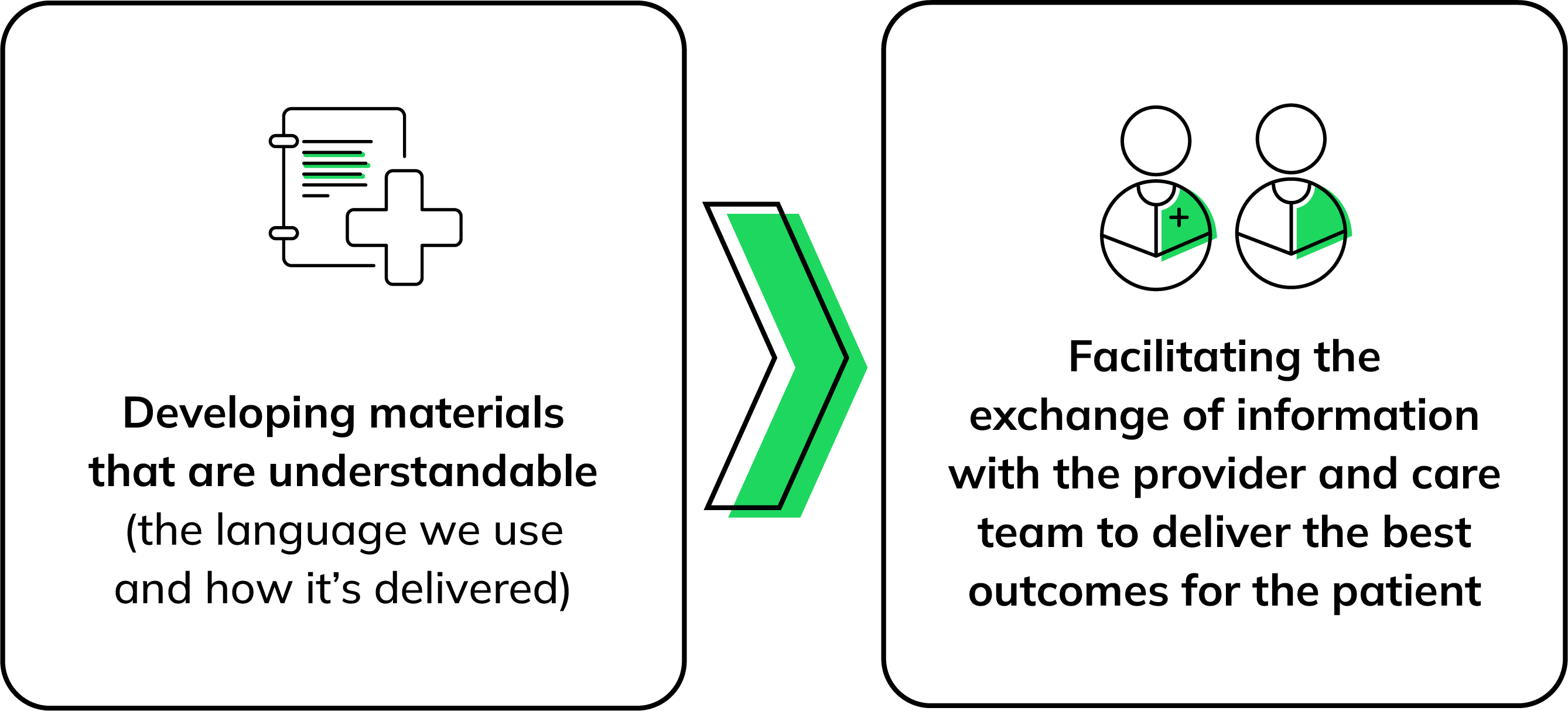Bridging the Gap on Shared Decision Making
September 21, 2022
MERGE Life Sciences Team
September 21, 2022
MERGE Life Sciences Team
Shared, or informed, decision making is a relatively new concept in the oncology space. And marketing can play a critical role in bridging the gap between traditional decision-making methods and the valuable benefits for patients that result from shared decision making with their healthcare team.
Historically, after a patient has received a definitive diagnosis, the treating doctor and care team would tell a patient what the next course of action should be. In many cases, treatment for a specific type of cancer is very regimented. Though a diagnosis may point to a specific treatment option, that option may not be ideal for that particular patient.
As a brand, there is an opportunity to step in and provide factual information and links to credible sources. We can become a trusted resource by:
Our deep experience in the oncology space has given us a unique view into the patient experience—past, present, and future.

With treatment algorithms, or pathways, provided by organizations such as the NCCN or the Commission on Cancer, healthcare providers (HCPs) can offer patients more therapy options. Finding out that they may have different options to choose from, patients may be encouraged that, with proper guidance from their HCPs, they can consider a treatment with certain side effects that might be more tolerable based on their lifestyle.
Case in point — Cathy Hertz, a Clinical Oncology Nurse Specialist recalls a conversation with a patient that changed the course of their treatment. The patient was a musician and was already suffering with some degree of neuropathy.
“Looking at your case and current limitations related to neuropathy, using a taxane may give you more neuropathy. This could further compromise your fine motor skills."
Based on that conversation and understanding the importance of fine motor ability for a musician, the care team and patient together were able to explore other options that were better suited to what the patient wanted and needed from their treatment.
In this instance, there was open communication between the HCP and patient to help inform the best course of action, but that is not always the case.
How HCPs can bridge the gap
To delve deeper into “bridging the gap” on informed decision making, I recommended facilitating engagement between HCPs and patients by making the appropriate information readily accessible and understandable in two ways:

Now, because so much information is available to HCPs and patients via the internet and social media, we are seeing that patients and their caregivers are more informed. This allows for a 2-way conversation that engages and involves the patient in the decision-making process and helps patients understand their specific challenges, as they are individuals with their own goals, concerns, lifestyles, and circumstances.
It's important to remember that since there is so much information out there, patients and their caregivers can become overwhelmed. The problem is that, unfortunately, much of that information is misinformation.
According to a study by Skyler Johnson, MD, of the Huntsman Cancer Institute, they found that every one in three articles about the four most common cancers contained false, inaccurate and misleading information. "Most of that misinformation about cancer was potentially harmful—for example, by promoting unproven treatments as alternatives to those that rigorous studies have shown to be beneficial,” stated Johnson.
How MERGE can bridge the Gap
By identifying and addressing the pain points that have historically caused the “gap” between patients and HCPs in treatment decision making, we can help bring them closer together by leveling the playing field.

Knowing what HCPs and oncology patients need and when they need it facilitates engagement and makes information readily accessible and understandable. Bridging the gap on informed decision making is what we do. We are there from the beginning of the treatment journey with the right information at the right time.
At MERGE, we help brands engage with patients and HCPs during the moments that matter most! Want to strengthen your life sciences marketing strategy? Get in touch today.